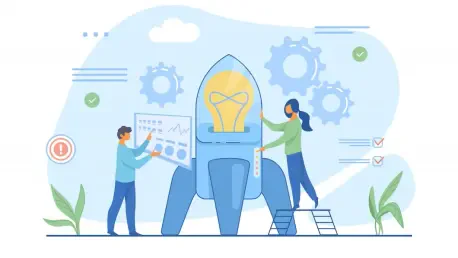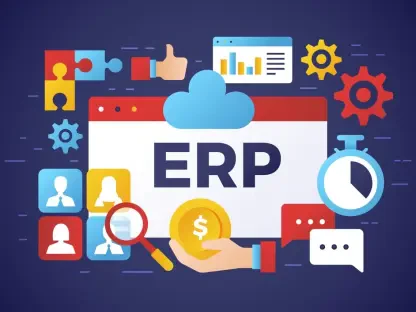I’m thrilled to sit down with Vijay Raina, a seasoned expert in enterprise SaaS technology and tools, who also provides thought leadership in software design and architecture. With his deep understanding of how traditional SaaS models are being disrupted by the rapid rise of AI, Vijay offers invaluable insights for founders navigating this transformative landscape. In our conversation, we dive into the evolving metrics for AI startups, the impact of compute costs on business models, innovative pricing strategies, adaptive go-to-market approaches, and the internal use of AI to boost efficiency. Let’s explore how AI is rewriting the rules of startup growth and what it means for the future.
How have traditional SaaS metrics like gross margins and the Rule of 40 become less relevant for AI startups?
Traditional SaaS metrics like gross margins and the Rule of 40 were built for a world where adding a new user was almost pure profit. In the SaaS era, once the software was built, the cost to serve each additional customer was negligible. But AI changes that equation dramatically. Every user interaction with an AI product consumes significant resources—GPU cycles, electricity, and inference time. This results in much lower margins, often in the 40-50% range compared to the 80-90% we saw in traditional SaaS. The Rule of 40, which balances growth and profitability, doesn’t fully capture the dynamics of AI startups where growth velocity often outpaces margin expansion. The focus shifts away from these legacy benchmarks to more relevant indicators of health in an AI-driven economy.
What new metrics should AI companies prioritize to better measure their success?
AI companies need to track metrics that reflect their unique cost structures and growth patterns. Compute efficiency—how much output you get per dollar of compute spent—is critical. Usage and engagement over time are also key, as they signal retention and potential expansion. Retention itself becomes a core metric, alongside growth velocity, which measures how quickly you’re scaling revenue or user base. Instead of obsessing over gross margins, I’d recommend focusing on unit economics that balance rapid growth with sustainable compute costs. Customer devotion, often seen through internal NPS or team adoption, is another vital sign of long-term success.
How do the high costs of compute impact your business compared to traditional software companies?
Compute costs are a game-changer for AI businesses. Unlike traditional software companies where infrastructure costs were a small fraction of revenue, in AI, every token or model call has a real price tag attached—GPUs, electricity, and cooling aren’t cheap. This means the cost to serve each customer is substantial and scales with usage. For us, it’s forced a rethink of how we design products and allocate resources. We’re constantly optimizing algorithms to reduce compute demands and exploring ways to pass some of these costs to customers through innovative pricing. It’s a stark contrast to the old SaaS model where scaling users didn’t scale costs nearly as much.
How has the shift of compute costs becoming the new customer acquisition cost (CAC) influenced your product design or business model?
When compute becomes the new CAC, it flips the traditional model on its head. In SaaS, the big spend was on acquiring customers through sales and marketing. In AI, the constraint is the cost to serve, so we’ve had to design products that sell themselves. This means focusing on virality, community-driven growth, and sticky, habit-forming features that drive organic adoption. Our business model prioritizes self-service onboarding and leverages user networks to spread the word, reducing traditional CAC. Product quality becomes the primary growth driver, as we can’t afford both high compute costs and heavy outbound sales efforts.
What strategies have you implemented to manage compute costs while still scaling rapidly?
Managing compute costs while scaling is a tightrope walk. One strategy we’ve adopted is optimizing our models for efficiency—using smaller, fine-tuned models where possible instead of always relying on the biggest, most expensive ones. We’ve also invested in smart caching and batching processes to reduce redundant computations. Negotiating bulk deals with cloud providers for GPU access has helped lower per-unit costs. Additionally, we’ve built usage limits into our pricing tiers to prevent runaway costs from overzealous users. It’s all about finding that balance between delivering value and keeping the infrastructure bill in check.
How do you balance the high cost of serving customers with keeping acquisition costs low?
Balancing high service costs with low acquisition costs comes down to product-led growth. We’ve focused on creating a product experience so compelling that users naturally become advocates, reducing the need for expensive marketing campaigns. Community building plays a huge role—when users share their success stories, it drives organic sign-ups. On the cost-to-serve side, we monitor usage patterns closely and encourage efficient consumption through tiered pricing. It’s about aligning incentives so customers get value without overusing resources, while we minimize spend on traditional sales motions.
Why do you believe usage-based or outcome-based pricing models are more effective for AI products than traditional subscriptions?
Usage-based or outcome-based pricing makes sense for AI because the cost to serve is directly tied to consumption. Unlike traditional SaaS where a flat subscription works due to near-zero marginal costs, AI products incur real expenses per interaction—think API calls or tokens processed. These models align revenue with the value delivered and the costs incurred. Customers pay for what they use or the results they achieve, like a specific task completed or productivity gained. It’s fairer and more transparent, ensuring we’re not underwater serving heavy users while light users overpay under a one-size-fits-all subscription.
Can you share an example of how you’ve linked pricing to the actual value or results your AI product delivers?
Absolutely. We’ve implemented an outcome-based pricing model for one of our developer tools where customers pay based on the productivity boost they experience—measured by metrics like lines of code generated or bugs resolved. For instance, if our AI helps a team cut debugging time by a certain percentage, their bill reflects that impact. We worked with early customers to define these metrics collaboratively, ensuring they felt the pricing mirrored the tangible benefits. It’s been a win-win: they see the direct ROI, and we capture value proportional to the impact, not just access.
How do you address the challenge of customers demanding the latest, most expensive models while keeping pricing sustainable?
It’s tricky when customers always want the cutting-edge models, which are often the priciest to run. Our approach is to offer tiered access—basic plans use more cost-effective, slightly older models with solid performance, while premium tiers unlock the latest tech for those willing to pay a premium. We also educate customers on trade-offs, showing how a less resource-intensive model might still meet their needs. Transparency is key; we share why costs scale with model sophistication and encourage them to start with what’s practical, upgrading only when the value justifies the expense.
What are “shadow targets,” and how do they differ from traditional sales quotas in your go-to-market strategy?
Shadow targets are a more flexible, feedback-driven approach to sales goals, unlike the rigid quotas of traditional SaaS. In AI, adoption and usage patterns are hard to predict, so setting fixed revenue targets can be unrealistic. Shadow targets act as guiding benchmarks—think of them as directional goals based on learning and mission rather than hard numbers. They allow our go-to-market team to focus on customer insights and product fit over just closing deals. It’s about iterating based on real-world feedback rather than chasing a preset dollar amount, which fosters adaptability in a fast-moving space.
How do you structure a smaller, more technical go-to-market team, and what skills do you prioritize in hiring?
Building a smaller, technical GTM team is about quality over quantity. We prioritize hires who understand the product at a deep level—often folks with coding or data science backgrounds who can speak the language of our customers, like developers or engineers. Problem-solving and curiosity are non-negotiable; they need to dig into customer pain points and translate that into product feedback. We also value automation skills—many team members build internal tools to streamline their own workflows. It’s less about traditional sales charisma and more about technical empathy and a builder’s mindset.
Can you share a story of how customer feedback or learning loops have influenced your sales strategy?
Early on, we noticed through customer feedback that many users struggled with onboarding due to the complexity of integrating our AI tool. Instead of pushing harder through sales pitches, we took that insight and built a self-service tutorial powered by our own AI, walking users through setup in real time. We also adjusted our GTM approach to prioritize inbound leads who’d already explored the tutorial, focusing our team’s energy on high-intent prospects. This learning loop not only improved conversion rates but also reduced support tickets, showing us how vital it is to let customer input shape both product and sales tactics.
How do you leverage AI tools internally to enhance workflows or efficiency within your organization?
We’ve woven AI into nearly every corner of our operations from day one. For instance, we use AI-driven assistants in our internal communication tools to search knowledge bases and answer routine employee questions, which has slashed onboarding time. We also deploy background agents for repetitive tasks like data entry or lead qualification, freeing up our team to focus on strategic work. It’s about working smarter—AI helps us stay lean by automating mundane processes and accelerating decision-making across departments, from engineering to sales.
Can you describe a specific AI-powered tool or process that has had a significant impact on your team?
One standout is an AI-powered Slack assistant we built for internal use. It’s connected to our entire documentation and project history, so when someone has a question—say, about a past decision or a technical spec—they just ask the bot instead of hunting through files or pinging colleagues. It’s saved countless hours, especially for new hires who can get up to speed without constant hand-holding. The impact on productivity and morale has been huge; our team feels empowered to find answers fast and focus on creative problem-solving instead of administrative grunt work.
What is your forecast for the future of AI business models over the next few years?
I believe AI business models will continue to evolve toward even tighter alignment between cost, value, and outcomes. We’ll see more sophisticated usage-based and outcome-based pricing as companies get better at measuring real impact—think pricing tied directly to business KPIs like revenue generated or time saved. Compute costs will likely remain a challenge, but advancements in hardware and model efficiency could ease the burden, allowing for more predictable margins. I also expect deeper collaboration within the AI ecosystem, where model providers and application developers work hand-in-hand to share costs and benefits. It’s going to be a wild ride, but the companies that master adaptability and customer-centric innovation will lead the charge.









